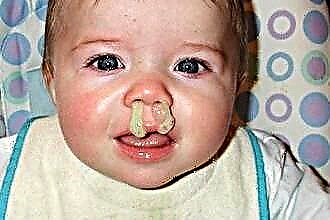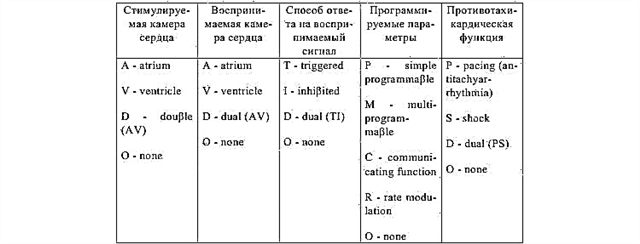Laryngospasm is an attack that is caused by a sharp convulsive contraction of the muscles of the larynx, which leads to the complete or partial closure of the ligament gap, and is accompanied by impaired respiratory and vocal function.
Help with laryngospasm in children is based on eliminating the main cause, relieving spasm and distracting therapy - this will be discussed below. It is very important to promptly identify the symptoms of laryngospasm in a child and call emergency medical care.
Delay in case of suspected laryngospasm is highly undesirable - it is better to play it safe than to be late with the implementation of assistance.
Main reasons:
- Insufficient amount of vitamin D and calcium in the body.

- Diseases with a chronic course, which arose as a result of illiterate treatment, or carried out at the wrong time (chorea, bronchial asthma, spasmophilia).
- Metabolic disease.
- The presence of allergens in the habitat.
- Birth trauma.
- The presence of foreign bodies in the respiratory tract.
- Hysterical attack, violent laughter, fright, tetanus.
- Inflammation of the pharynx, trachea.
- Allergic reaction to medications.
- Diseases are associated with the rotational and vagus nerves.
- Children who have epilepsy and dropsy of the brain.
- When lubricating the oral mucosa with certain medicinal substances.
- With sputum and mucus flowing down the back of the pharynx.
Symptoms of manifestation:
- Abrupt change in breathing with frequent tipping of the head back (trying to capture air).
- Pallor of the skin, which is associated with the cyanosis of the nasolabial triangle.
- The baby's mouth is open, and foam is discharged.
- The skin is covered with cold sweat, the pulse quickens and becomes weak.
- The neck muscles are tense, and the auxiliary muscles take part in the act of breathing.
- A whistling loud breath is heard.
- Sometimes there are convulsions of the extremities, as well as loss of consciousness, cardiac arrest.
- Unconscious bowel movements and urination are possible.
- In very difficult cases, asphyxiation occurs.
- After a crisis that lasts a few minutes, the child takes a deep breath and falls asleep.
Immediate care plan
At the first signs of laryngospasm in a child, it is important not to panic, call an ambulance, and before she arrives, try to help him on his own. What can be done?
- Make sure that no foreign object has entered the respiratory tract. If you find that the airway is blocked by a foreign body, then try to reach it with your hands. If all else fails, turn it upside down. You can also press on the solar plexus using the pushing movement method, the child will begin to cough, as a result of which the object will come out.
- Provide access to fresh oxygen (open a window, take the patient out onto the balcony, turn on the air conditioner or fan, open the collar or undress).
- It is very important to reassure the child, as his anxiety further aggravates the narrowing of the ligaments.
- Take a cotton swab soaked in ammonia and bring it to the patient's nose. This will bring him to his senses.
- Distraction therapy is also effective in relieving cramping. This can be done with light pinching. You can also pull on your tongue or press on the root of your tongue to induce a gag reflex.
- Cover your baby's face with a damp handkerchief or towel to moisturize and soften the dry environment.
- You can give a little drink and moisten your face with cool water.
- Taking a warm (but not hot) bath can also help relieve cramping.
- If the child can understand the requests, then ask him to hold his breath, and then begin to breathe slowly and calmly.
When parents are aware that their child is prone to laryngeal spasms, they will need to purchase a nebulizer for inhalation with alkaline water, soda solution, Pulmicort suspension. This is a great way to relieve choking.
If parents know that muscle spasm is caused by allergens, it is advisable to use antiallergic drugs (Fenistil, Tavegil, Suprastin, Fenkarol).
When the ambulance arrives and the manifestations are stopped, the child must be made an appointment with a specialist (pediatrician, pulmonologist, allergist) for further etiological treatment.
Prevention of spasm attacks
 A growing body needs sufficient amounts of calcium and vitamin D. These drugs are sold in every pharmacy.
A growing body needs sufficient amounts of calcium and vitamin D. These drugs are sold in every pharmacy.
One of the most important prevention methods is breastfeeding.
All children need long walks in the fresh air. But you need to walk not only in the yard. Walk together to the park, to the forest, to the sea.
If laryngospasm did not happen to a baby, but to an older child, in the future it is necessary to monitor the diet. The main thing is that it is rational, balanced, saturated with vitamins, all essential amino acids and other nutrients.
If the baby is artificially fed, it is necessary to choose the formula that is closest to breast milk.
If the spasm of the larynx has an allergic etiology, it is necessary to eliminate all allergens. Whether it's a cat, a parrot or a dust mite in your favorite carpet. It is worth getting rid of all sources, because the health of children is most important. It is for this reason that young parents do not need to rush to acquire pets, since the transfer of cats and dogs to another owner is a great stress for both animals and children.
Relax the child's nervous system. Let it be massage, swimming, games, painting. But there is only one condition - not to force the child to do this. The type of sport or recreation should be chosen together so that they do not cause new stress and exacerbate the situation.




